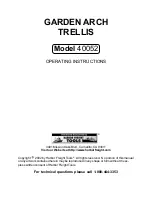
HUYGENS OPTICS
CS-2/3 camera strobe manual V01
11
Choosing a suitable LED lens type when ordering
Appendix B gives the illuminance in unit Lux for various distances and lens types. In the graphs, the
average illuminance is displayed at a pulse frequency of 50Hz and a pulse length of 50µs. Figure 10
shows an example of the illuminance profile of a CS-2 unit at 600mm distance, with various lens
types. The tight lenses keep most of the light confined within an area of approx. 215 mm diameter
area at 600mm distance, whereas the medium beam is wider (270mm) and thus also has a lower
maximum illuminance. The ultra-wide has a low luminance, but a very uniform distribution (spot size
> 420mm, see Appendix B and C for details)
Figure 10: illuminance profiles at 600mm distance for a CS-2 with tight (narrow), medium and
ultra-wide illumination.
Be aware that at a setting of 50Hz and 50us pulse width, the strobe light is in the
“
on
”
state only
1/400
th
of the time. When using a camera, the luminance during the light pulse is actually more
important. Under these conditions the value is 400x times higher than the value given in the graphs.
The choice for a specific LED lens type is dependent on the distance from the object and the
required surface area and intensity. Table 2 gives typical values for advised working distances for the
various lens types
Lens type
Min. distance (mm)
Max distance(mm)
Tight
300
1200
Medium
200
600
Wide
200
400
Ultra-wide
100
200
Table 2. Indicative application distances for the lens types available for the CS-2
Connection to the Huygens Optics Camera interface
Connection of the units to the to the Huygens Optics Camera Interface is straight forward and is
shown in figure 11. It requires a cable with XLR connectors on both sides, one connecting to the unit
and one to the back side of the Camera Interface. The standard camera interface allows 2
CamStrobes and 1 camera to be connected. The Interface also has an input for external triggering
available.





































